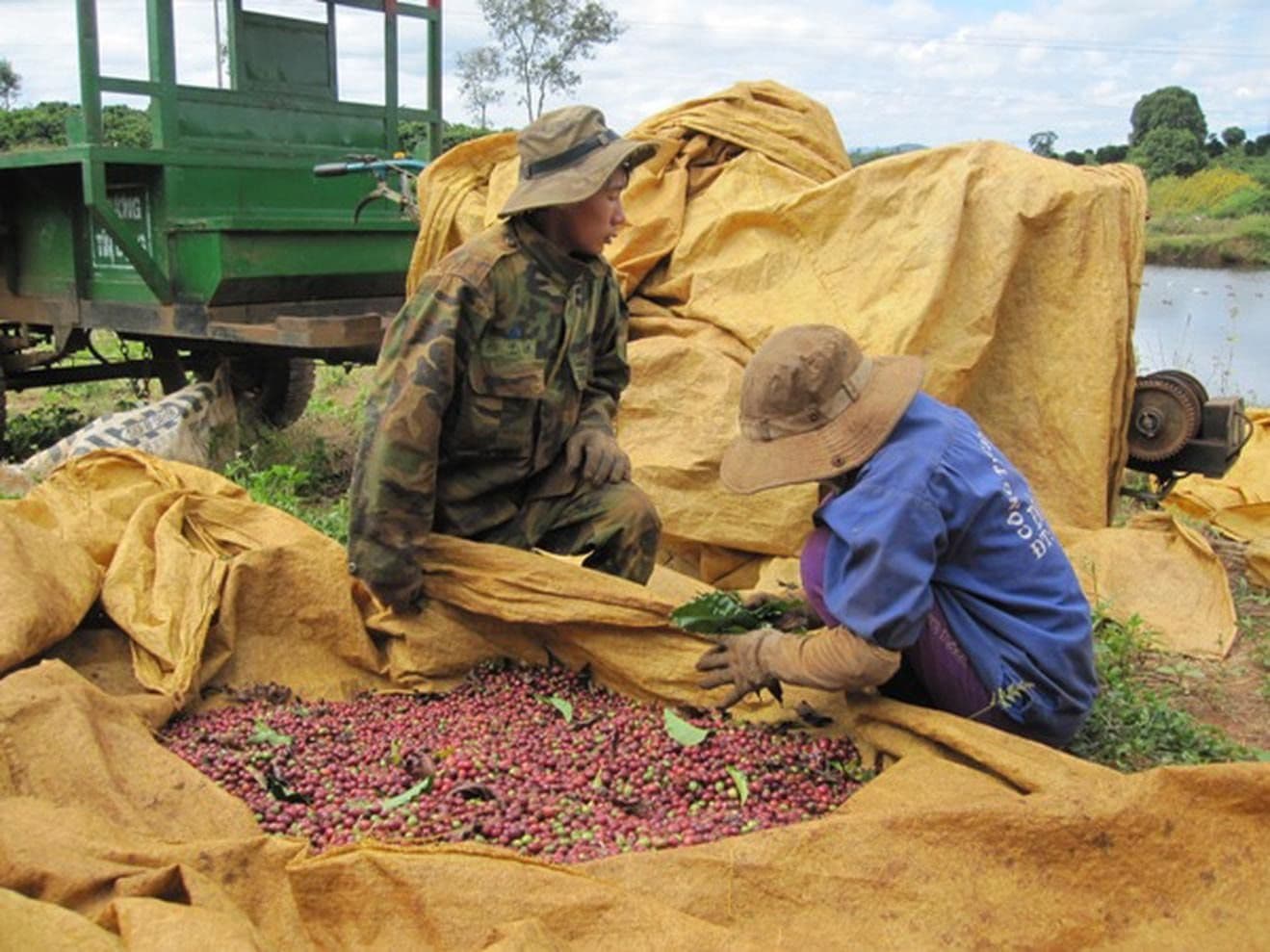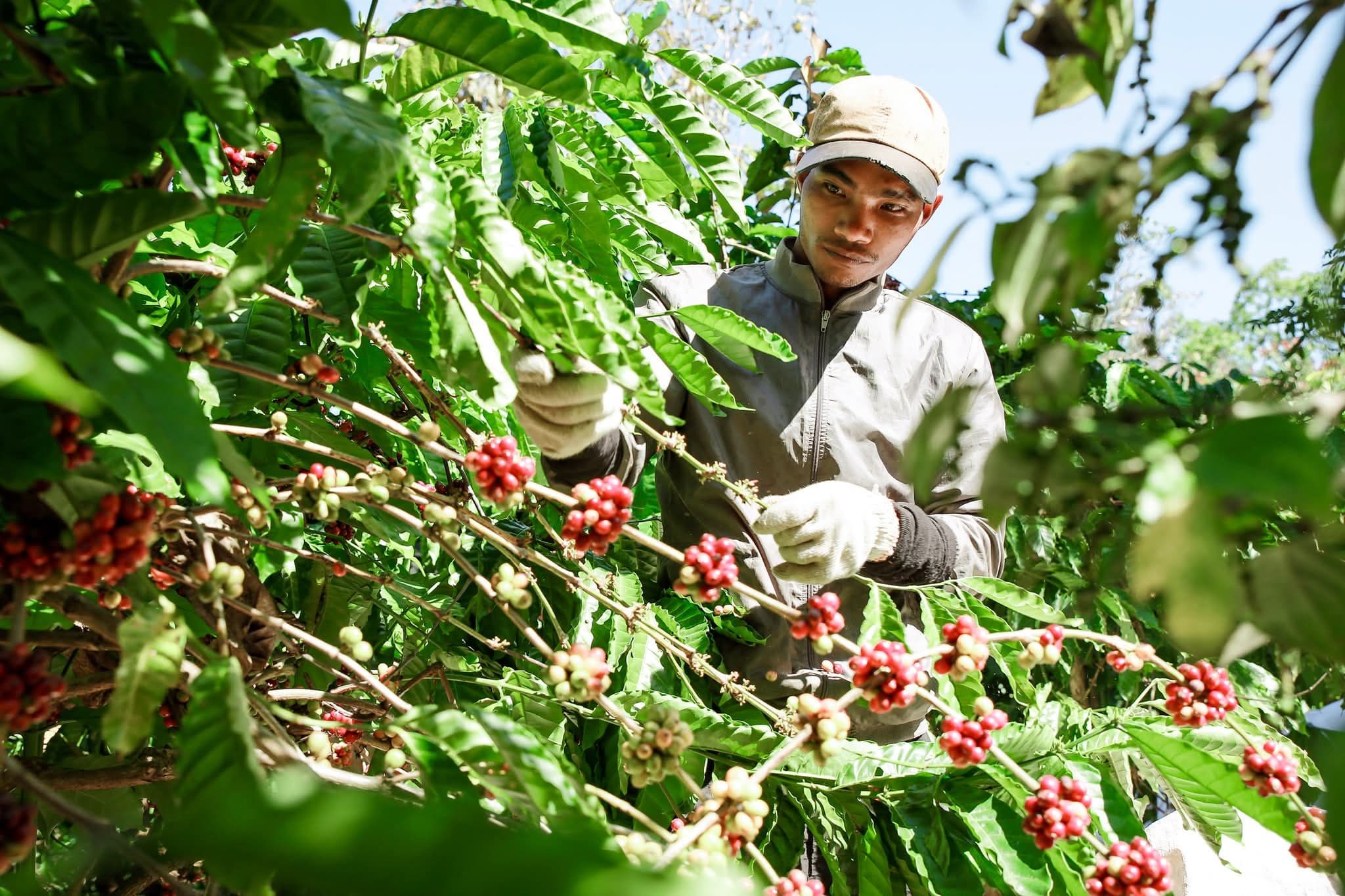The Golden Bean Rush: Asia's Ascent and the Rewriting of Global Coffee Prices
Unpack the forces behind coffee's record price climb. From Vietnam's pivotal role to India's burgeoning thirst, discover the new dynamics reshaping the global bean market.

The Brewing Tsunami: A Global Price Overview
The global coffee market is currently experiencing an unprecedented surge, a veritable "brewing tsunami" that’s catching the attention of analysts and consumers alike. Rather than fleeting fluctuations, what we're witnessing feels like a fundamental recalibration. futures, particularly for November 2025 delivery, have recently shot up by $133 to hit $4,401 per ton, with September 2025 contracts seeing an even more dramatic $236 increase to $4,646 per ton. This remarkable rally has seen Robusta recover a staggering $1,300 per ton in just over two months, reaching its highest levels in that period. Not to be outdone, prices on the New York exchange are also climbing, with December 2025 futures gaining $100 to $7,790 per ton, and September 2025 contracts reaching $7,940 per ton. Domestically in , the situation is even more striking, with prices soaring by 4,600 VND/kg to reach 121,700 VND/kg, a significant jump from the 88,500 VND/kg seen just a month prior. This isn't just a daily blip; it's a sustained, multi-digit ascent across the board, signaling deep-seated shifts in the global coffee landscape.

Vietnam's Unsung Power: Robusta's Role in the Rally
While Arabica often grabs the headlines, Robusta, the workhorse of the coffee world, has quietly become the driving force behind this current price rally, largely thanks to pivotal role. As the world's leading Robusta producer, Vietnam's supply dynamics directly dictate much of the global market's direction. We've seen Robusta prices on the London exchange soar, with daily gains sometimes hitting triple digits, reflecting intense demand. The most telling sign of Vietnam's influence is the domestic price, which currently stands higher than international futures contracts. This unusual premium stems from Vietnam being at the tail end of its harvest season, with very little stock remaining in the hands of farmers. This scarcity, combined with pre-signed export contracts maintaining high prices for Vietnamese businesses, underscores the strategic importance of this origin. It's clear that any tightening of supply from Vietnam sends immediate ripples through the global market, elevating Robusta from a secondary bean to a primary price driver and highlighting its critical, often underappreciated, power in the global coffee economy.

The Billion-Cup Boom: India's Transformative Thirst
Beyond the immediate supply constraints, a monumental shift in global demand is fundamentally reshaping coffee's future, and nowhere is this more evident than in Asia's burgeoning markets. While China's growing appetite for coffee has been widely noted, , another nation of over a billion people, is emerging as a game-changer. Industry leaders like are forecasting a doubling of India's coffee consumption within the next five to ten years. This isn't just a passing fad; it's driven by a young, increasingly urbanized generation that views coffee as an integral part of their daily routine, moving beyond traditional tea consumption. This surge in domestic demand has profound implications for the global balance sheet. Despite being a coffee exporter, India's own exports have seen a significant 14% drop in the first nine months of the 2024-2025 crop year, shipping only 5 million bags. This trend suggests that India could soon transition from a net exporter to a net importer, or at least significantly reduce its exportable surplus, further tightening global supply and adding sustained upward pressure on prices.
Beyond the Harvest: Climate, Policy, and Futures Forecasting
While immediate supply and demand dynamics, particularly from key producers like and emerging consumers like , are undeniably shaping current coffee prices, a broader tapestry of factors is also at play, pointing towards a sustained "new normal." Geopolitical considerations and trade policies, such as the impact of tariffs leading to reduce its coffee exports, inevitably create ripples, shifting global supply chains and offering pricing opportunities for other origins. More subtly, the looming shadow of climate change, though not explicitly detailed in daily price reports, remains a critical long-term variable. Erratic weather patterns, droughts, and unpredictable harvests in major growing regions around the world are constant threats to supply stability, adding an underlying layer of uncertainty and bullish sentiment to the market. This confluence of factors is what makes futures forecasting so compelling. The sustained high prices observed across various future contracts, from September to December 2025, suggest that market participants aren't anticipating a quick return to lower levels. Instead, they are pricing in a future where coffee remains a premium commodity, reflecting these evolving environmental, political, and economic realities.
Navigating the New Normal: Implications for Growers and Consumers
So, what does this evolving landscape, characterized by soaring prices and structural shifts, mean for the millions involved in the coffee journey? For growers, particularly in regions like , this "new normal" could finally translate into more sustainable incomes. After years of volatile and often depressed prices, the current rally, with domestic Vietnamese prices comfortably above international futures, offers a much-needed financial boost. Farmers holding onto their limited remaining stock are seeing significant gains, celebrating "triple-digit increases" that can fund improvements in their farms and livelihoods. However, for consumers, the implications are clear: your daily cup of coffee is likely to become more expensive. This isn't just a temporary pinch; it's an adjustment to a market where robust demand from new, massive consumer bases, combined with strategic supply constraints and broader global factors, underpins a fundamentally higher price floor. Both growers and consumers must adapt. Growers can reinvest in more resilient, sustainable practices, while consumers might need to adjust their budgets or explore new consumption habits, as the golden bean truly enters an era of elevated value.
Related Articles

Brewing a New Reality: The Unseen Forces Behind Coffee's Historic Climb

Brewing a New Reality: The Unseen Forces Behind Coffee's Historic Climb

Coffee's August Surge: Decoding the Market's Unpredictable Brew

Coffee's August Surge: Decoding the Market's Unpredictable Brew

When Pixels Meet Prices: Unraveling the Online Coffee Market's Wild Ride

When Pixels Meet Prices: Unraveling the Online Coffee Market's Wild Ride

Sweet Success, Bitter Policy? Navigating Vietnam's Unprecedented Coffee Season
